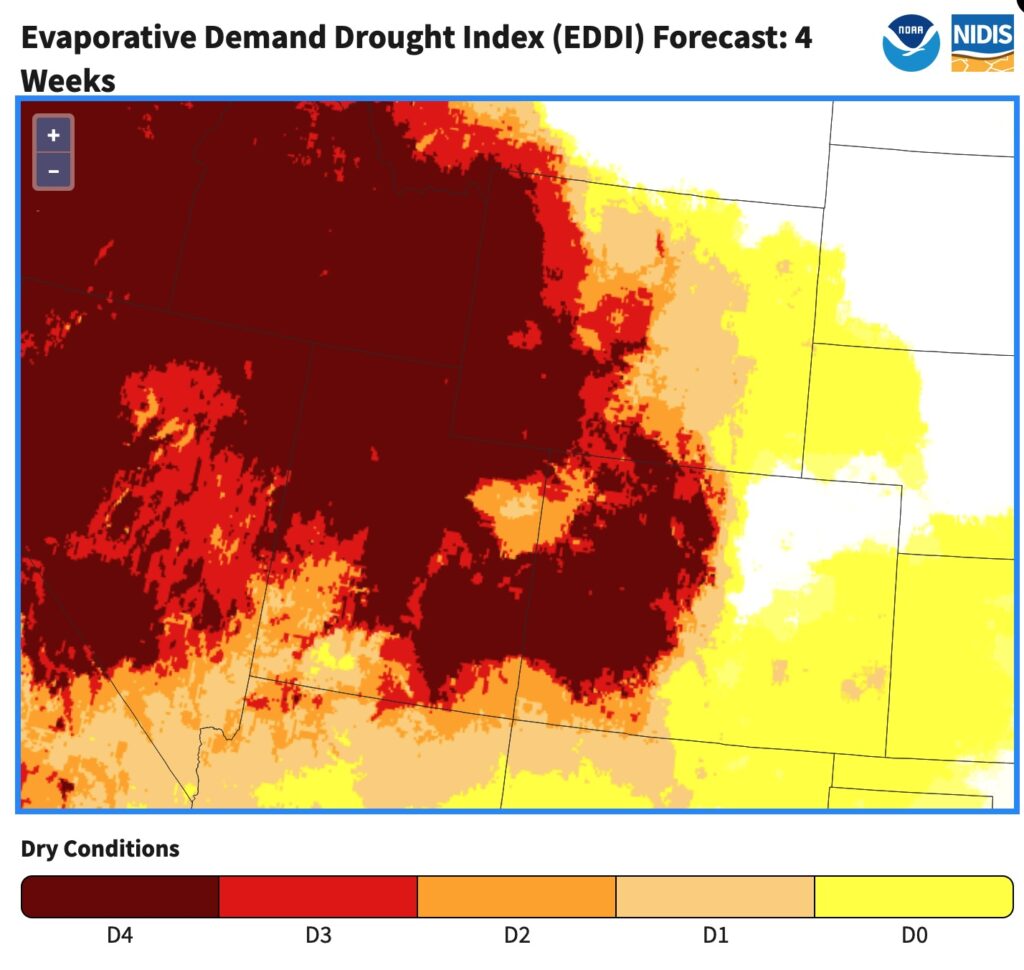
The next month (February-early March-ish 2024) points to drying over the Colorado River Basin snow-making areas.
The UC Merced Evaporative Demand Drought Index (EDDI) points to drying over the Colorado River Basin over the next four weeks.
EDDI is a new experimental tool that offers potential for tracking quickly emerging drought conditions by analyzing the evaporative demand of the atmosphere. It combines how moist things are with how hot and dry the atmosphere is – how much moisture that “thirsty” atmosphere will be sucking up out of soil and plants. (More here.) I’ve started tracking it as an add-on to watching the Colorado River Basin Forecast Center’s runoff forecasts. The forecast is already “meh” (~1maf below average). EDDI suggests we should expect it to get worse.
A Compact Tripwire in the headlights
A reminder of something Erik Kuhn and I wrote about last month:
The Bureau of Reclamation’s January 2024 “Most Probable” 24-month study forecasts that annual releases from Glen Canyon Dam for both Water Years 2025 and 2026 will be 7.48 million acre-feet per year (maf). If this happens, the ten-year total flow at Lee Ferry for the 2017-2026 period will drop to about 83.0 maf, only about 500,000 acre-feet above 82.5 million acre-feet, the first 1922 Compact hydrology “tripwire.”
That line – 82.5 maf feet of Lee Ferry deliveries over a ten year period – has become a dividing line between two contending interpretations of the most important unresolved question in the century-old Colorado River Compact: How much water must the Upper Basin deliver to the Lower Basin? What happens if it doesn’t?
A plea – we need to be having a public conversation about this. The current Upper Basin-Lower Basin negotiations over the Post-Tripwire Colorado River Management Regime appear to have wandered into the Grimpen Mire:
“It’s gone!” said he. “The mire has him. Two in two days, and many more, perhaps, for they get in the way of going there in the dry weather, and never know the difference until the mire has them in its clutches. It’s a bad place, the great Grimpen Mire.”
– Arthur Conan Doyle, The Hound of the Baskervilles
We keep euphemestically calling them the “Post-2026 Guidelines”, but let’s be real about this.
We are talking here about the Post-Tripwire Colorado River Management Regime.
It could snow a lot between now and summer and bail us out again this year. But we can’t look away from the Tripwire.

Saying what needs to be said is step #1, followed by the bigger lift of step #2–doing what needs to be done.
My sense is we are stuck in a rut of finding different ways to say what needs to be said. May we soon progress to step #2. The EDDI is a good tool for that transition.